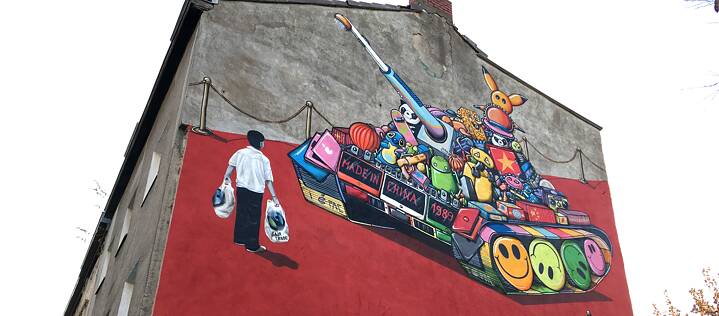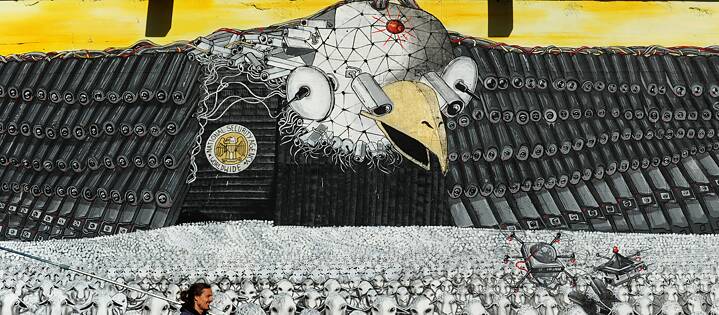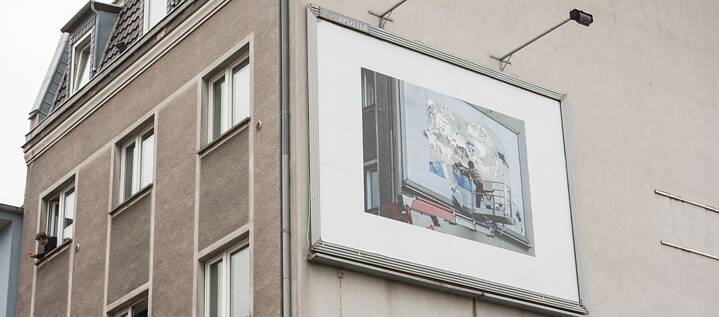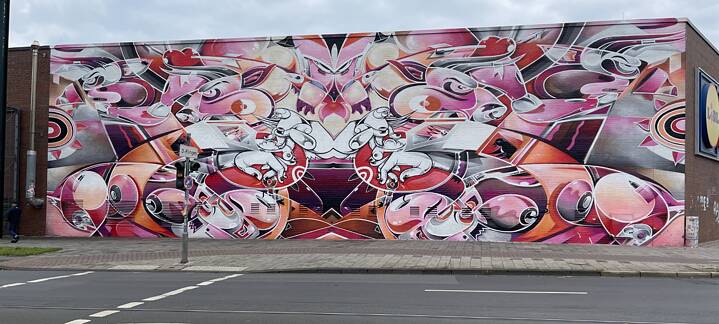Urban art
Transforming cities
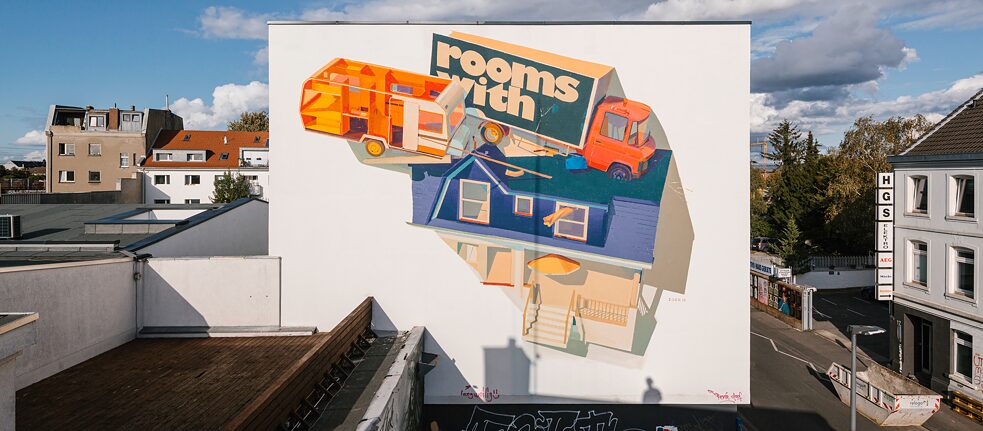
Art in urban spaces is about so much more than just colourful walls: It can also be a central element of social change. Two street art projects in Cologne and Dusseldorf are using art to increase participation and social cohesion.
By Johannes Zeller
Walking through Cologne’s Ehrenfeld district, it is impossible to miss the artistic graffiti that has transformed entire building facades into gigantic works of art. The murals stretch stories high: A Mexican maize creature stares down at passers-by from one building, while a skinned rabbit hangs from a roof on another, and a few streets down, a tank filled with “Made in China” toys rolls towards a man holding fair trade bags. The images range from the fantastic to the socially critical, from the serious to the bizarre.
The numerous murals by international artists have become the district’s trademark, transforming grey blocks of buildings into an urban art gallery. And they are not just limited to this area – windowless walls all around the city have become gigantic murals that are an integral part of the cityscape. This transformation is in large part thanks to the CityLeaks Urban Art Festival, which has been changing the streets of Cologne into an international forum for urban art every two years since 2011 and left a lasting impression on the city every time.
The murals in Dusseldorf’s Kiefernstraße, probably the city’s best-known spot for street art, are crowded even closer together and no less artistic. The street is lined with artfully designed house facades, murals, and colourful tags. Here, too, art has changed the cityscape, giving the space a new character – and here too, an art festival has been a part of the process. The 40grad Urban Art Festival invites young street artists to express their ideas in public painting events in Kiefernstraße and elsewhere.
Works of art replace grey facades
Artists influence how we experience cities with graffiti, street performances, installations, and other adaptations of everyday urban life. Their pieces take a stand and sometimes even change social realities. As artistic director Georg Barringhaus of Cologne-based CityLeaks notes, this unifying and transformative character of art is also the driving force behind the arts festival: “Urban art makes urban spaces accessible”. Art renders the invisible visible and connects people regardless of origin, status, or milieu.
Aartrmx e.V. works with artists, researchers and neighbours to organise CityLeaks. Together they coordinate exhibitions, interventions, guided tours and publications. Visitors can also see where individual artworks are on the CityLeaks website and visit them on a discovery tour. This enjoyable new way of spending some free time has also turned previously ignored corners of the city into attractive places to be.
The 40grad Urban Art Festival in Dusseldorf takes a similar approach to transforming public space by encouraging young artists and young people to get involved. Every two years, they take part in coordinated painting campaigns, creating new graffiti throughout the city, and have transformed countless grey surfaces throughout Dusseldorf into impressive works of art since 2013. A committed group of Dusseldorf residents work with several children’s and youth organisation to realise 40grad Urban Art. Together, they are actively increasing young people’s participation in urban design.
Discourse and research on urban art
Urban art has so many implications for the development of urban spaces and people’s everyday lives that is an attractive subject for scientific and public discourse. To promote research and discussion, the CityLeaks Festival organised a congress for discourses on urban development, which marked the birth of the CityLeaks Academy. The interdisciplinary platform for urban research brings artists, researchers and the public together to rethink and reshape the city.
“What keeps a city alive and, more importantly, what makes it worth living in?” is one central question the discourse platform addresses, festival director Margrit Miebach says, along with: “How and where is diversity expressed and how can it be preserved?” and “How can we claim our rights to the city together?”
These are some of the questions that come to mind when we think about the present and future of cities. The contradictions, interests and needs of an urban society are revealed in open spaces, like parks, squares, waterfronts, and streets. Urban art can provide impulses for challenging, commenting on, and reinventing urban structures.
